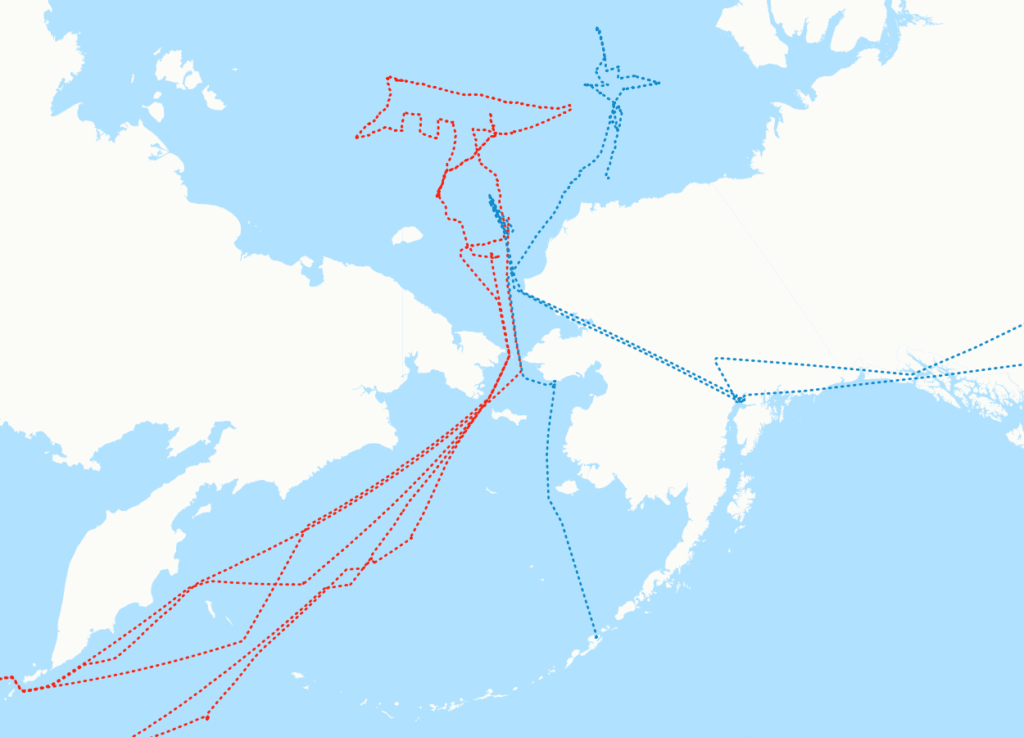A United States reconnaissance aircraft was tracked flying over Arctic waters near Alaska over the weekend, as five Chinese research vessels arrived in the region.
When asked for comment, U.S. Northern Command said in a written response to Newsweek on Tuesday: “We do not release specific information regarding ISR platforms or missions.” ISR refers to intelligence, surveillance and reconnaissance.
Newsweek has also reached out to the Chinese Foreign Ministry for comment via email.
Why It Matters
The unprecedented presence of Chinese research ships in the Arctic is regarded as part of China’s efforts to assert its claim as a “near-Arctic state” and as an important stakeholder in the region’s affairs.
China’s presence in the Arctic and its cooperation with Russia have alarmed the U.S. and its Arctic allies—Canada and Norway. Last year, the Pentagon released its updated strategy for the Arctic, calling for an increased military presence and enhanced intelligence capabilities.
What To Know
@MeNMyRC1, an open-source intelligence analyst on the social media platform X, was the first to spot the spy flight conducted by a U.S. Air Force RC-135V Rivet Joint reconnaissance aircraft, which can detect, identify, and geolocate signals across the electromagnetic spectrum.
“I saw this flight by 64-14841 on Saturday, and it caught my eye due to the location and ‘urgency’ of the flight,” @MeNMyRC1 wrote, referring to the aircraft’s registration number.
Using flight tracking data from online service Flightradar24, a Newsweek map shows the Rivet Joint aircraft arrived at Elmendorf Air Force Base in Anchorage, Alaska, from its home station at Offutt Air Force Base near Omaha, Nebraska on August 9.
The spy plane took off again on the same day—approximately five hours after its arrival—and flew northwest. It was tracked circling over the Chukchi Sea, which lies between the Arctic Ocean to the north and the Bering Strait to the south. The mission lasted six hours.
The aircraft—which provides on-scene intelligence collection, analysis, and dissemination—returned to Nebraska the following day, approximately 10 hours after its mission.
“Looks like it was to check up on a group of Chinese ‘research’ ships,” @MeNMyRC1 added.
According to the analyst, a second Rivet Joint aircraft, with registration number 62-4125, was deployed at Elmendorf Air Force Base but has not been tracked flying since August 1.
This spy plane, which is an RC-135W version of the aircraft, is possibly being sidelined by mechanical issues.
“This could explain why [64-14841] was dispatched up to make the flight,” the analyst noted.
Meanwhile, a spokesperson for U.S. Northern Command—which is tasked with homeland defense—confirmed to Newsweek on Monday that the five Chinese vessels are being monitored while operating in the Arctic.
“Although the vessels are operating in international waters and are not considered a Homeland Defense threat, their numbers represent an increase from years past.”
What People Are Saying
A U.S. Northern Command spokesperson told Newsweek on Monday: “[North American Aerospace Defense Command, NORAD] is responsible for identification and warning of maritime tracks of interest and works closely with Canada and interagency partners to do so. NORAD and [U.S. Northern Command] will continue to monitor the ships’ progress while operating in the region.”
The U.S. Air Force says of the Rivet Joint aircraft: “The Rivet Joint’s modifications are primarily related to its on-board sensor suite, which allows the mission crew to detect, identify and geolocate signals throughout the electromagnetic spectrum. The mission crew can then forward gathered information in a variety of formats to a wide range of consumers via Rivet Joint’s extensive communications suite.”
What Happens Next
It remains to be seen whether the U.S. will deploy additional ships or aircraft to monitor the Chinese research vessels operating near Alaska.
Read the full article here

